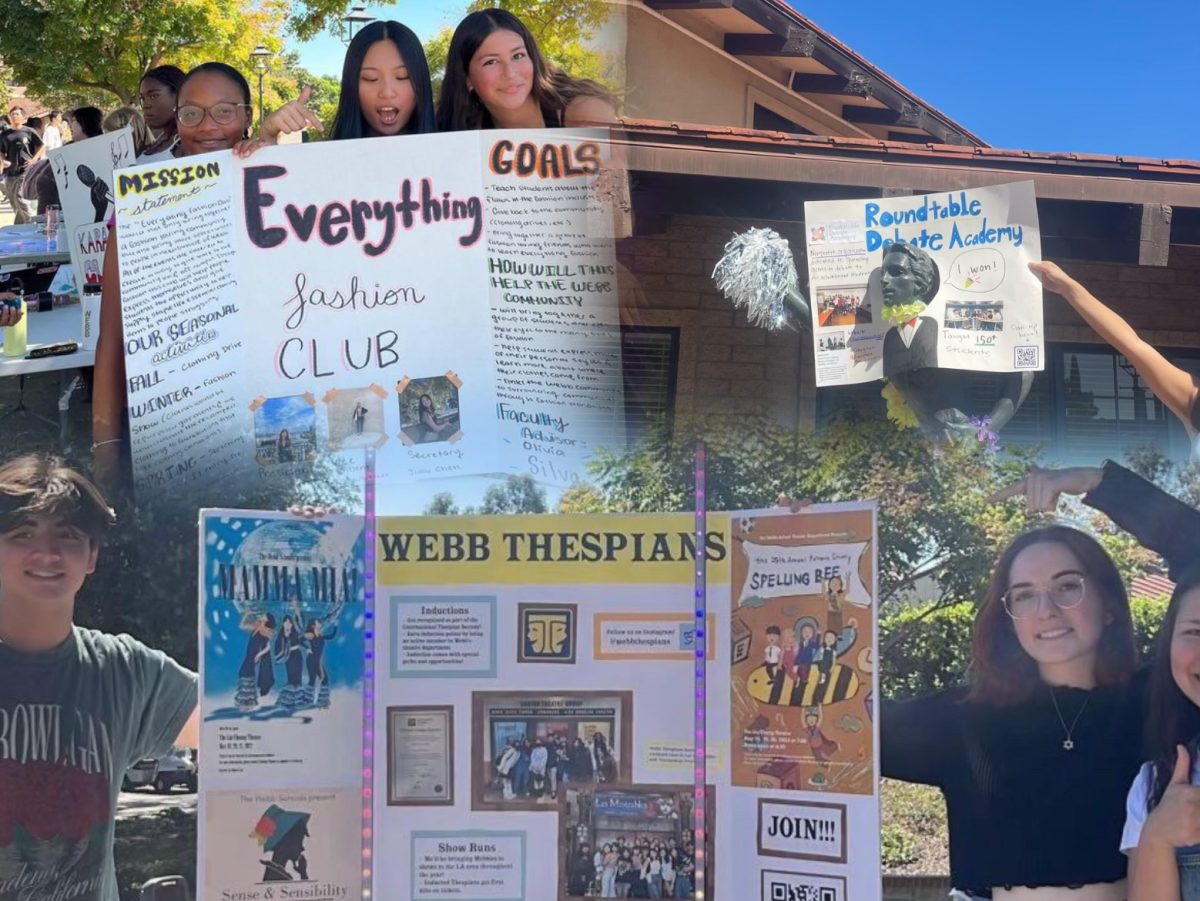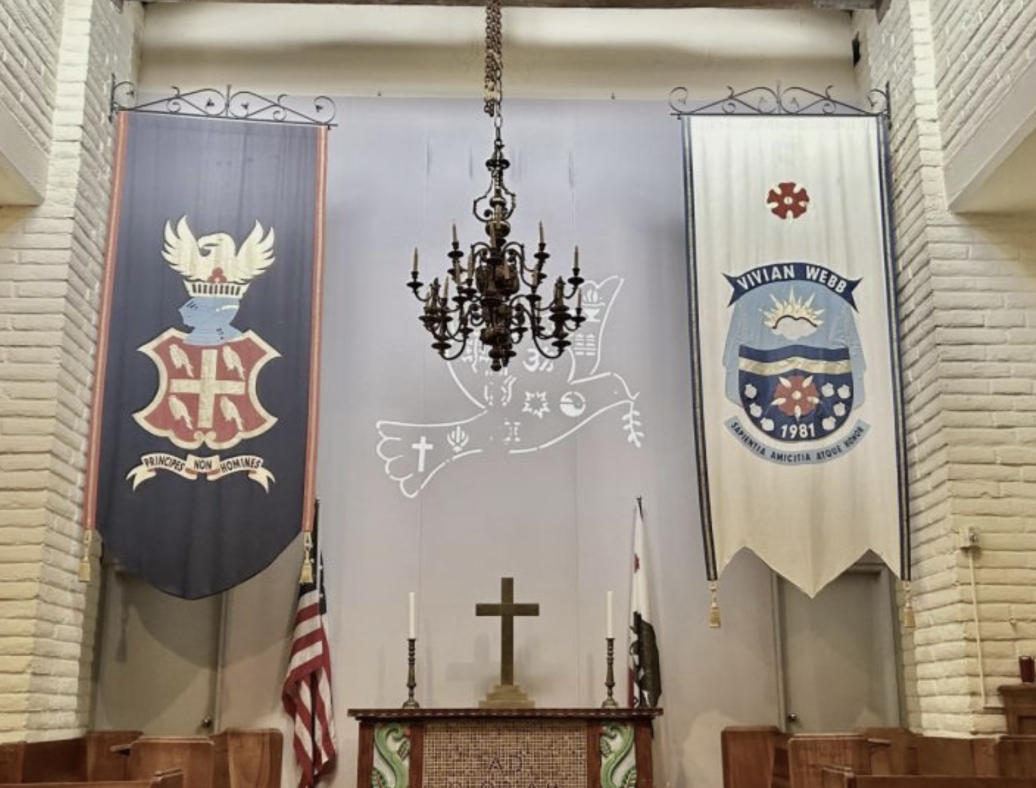Every year, the club fair boasts high promises. The loud music, bright posterboards, and commotion never fails to get Webbies excited. Over two years ago, I remember eagerly pacing around the seemingly endless, crowded club fair. Just as every one of the 70+ club poster boards were colorfully decorated, I was excited: to get involved, meet new people, and explore potential hobbies that I could spend my next four years nurturing.
To my disappointment, almost all the clubs I signed up for had no more than a first meeting. Clubs at Webb have a reputation of being inactive. With Webb’s jam-packed and fast-paced schedule, the loud noise and enthusiasm of the club fair inevitably fades into the background as clubs slowly get forgotten. Most clubs end up not meeting the minimum requirement of 3 events per year and fail to follow their initial ideas and goals.
Commitments like leadership meetings, rigorous classes, and afternoon activities take priority as they are mandatory and built into our daily schedules. Clubs are eventually lost as they require students to go out of their way — beyond Webb’s daily schedule — to plan events and activities that are risky and don’t always have a large turnout.
This is precisely what makes clubs so valuable to the Webb community. The motivation and proactive spirit that comes from leading a club is something that Webb needs more of — and it is also why Webb needs a more prominent club culture.
Before we dive into how this can happen, we must identify why Webb’s clubs are so prone to failure. Aside from Webb’s demanding schedule, clubs do not get significant funding and lack committed members. Students start clubs left and right with no strong intention of staying committed; they have ideas but no strong plan of action. According to Mr. Ken Rosenfeld, one out of two clubs have occasional meetings or events and only one out of four clubs actively meet.
“A lot of clubs have a really good idea and enthusiasm early on when they’re applying, but Webb life gets a little heavy and things need to be sacrificed,” said Mr. Rosenfeld, Dean of Campus Life, “That is often the clubs. When a club is purely based off inspiration and not deeply rooted in passion from the leaders, it falls apart.”
Another big part of club culture at Webb is its association with college applications. Webb’s competitive nature mistakenly leads students into thinking that the more leadership positions or commitments on your resume, the better. However, this couldn’t be further from the truth. As students create clubs to seem more desirable to colleges instead of to nurture their own interests, the quality and consistency of the club eventually takes a backseat.
“Colleges do not care who the president is or how many clubs you lead,” said Mr. Rosenfeld, Dean of Campus Life. “They care about what you do, and that you care about how that shapes who you are and how that influences what you do down the line.”
This being said, active clubs are worth the time and effort, though only a few successful clubs at Webb prove that. Some examples include the chemistry club, which offers regular IPC tutoring to help sophomores, the art club, which displays amazing student art and talent for the whole school during Art Cafés, and Roundtable Debate Academy Club, a club that makes debate more accessible by allowing students to tutor debate to kids in need.
Clubs allows a unique aspect of freedom that sets it apart from Webb activities like athletics, leadership positions, or afternoon activities. Students are given an opportunity to create their own ways to contribute to Webb as well as allow niche interests to thrive and find a community.
“I think the clubs are the one thing you guys get to do where it’s really your contributions,” said Dr. Joseph Martin, Chemistry Club’s advisor. “Even though you guys are busy with Webb’s demanding schedule, it really is up to you. It brings out the dedicated and motivated side of a student.”
Looking at other schools in the area, we can make a comparison of what clubs should look like. Claremont High School’s club culture is one that is rich and thriving. Their many planned events and activities throughout the year create something engaging and interesting for the student body to do after school. At CHS, clubs are a bigger deal to the school community as they provide a meaningful setting where students can meet new people and collaborate on common interests.
Of course, it is unfair to draw a comparison between a public school with thousands of students to our small Webb community, but there are certainly aspects of Claremont’s club culture that can and should be adopted into our school.
“A typical club usually starts with an interest and most people will come together and work on something they have in common,” explains Adeline Jan, senior president of the National Honor Society and One Way One Life at Claremont High School. “I think that by being an active club, if you have more events and create an impact on the school people will want to join and stay.”
However, since Webb is a boarding school, it is already hard for boarders to pursue out-of-school extracurriculars or even communicate with students from other schools who might have similar interests. In order to make up for that and foster more opportunities for student led initiatives at Webb, it is necessary for club culture to be more active. With the 2023 club fair, clubs have come to a successful opening – I urge club leaders to stay active and continue bringing their passions to the Webb community.







![Many Webb students spend their free time in the library watching a popular TV show like Riverdale and Euphoria. “Based off what I’ve seen, like in Euphoria, because the actors are older, they don't showcase an actual high school life properly,” Sochika Ndibe (‘26) said. “Since [the actors] are older [and] playing a teenager, from a girl’s perspective, it is going to make you think you should look more developed at a young age.” The actor, who plays Veronica Lodge, was 22 years old at the time of filming.](https://webbcanyonchronicle.com/wp-content/uploads/2025/03/Antecol-Media-affects-how-society-functions-graphic-1200x900.png)


